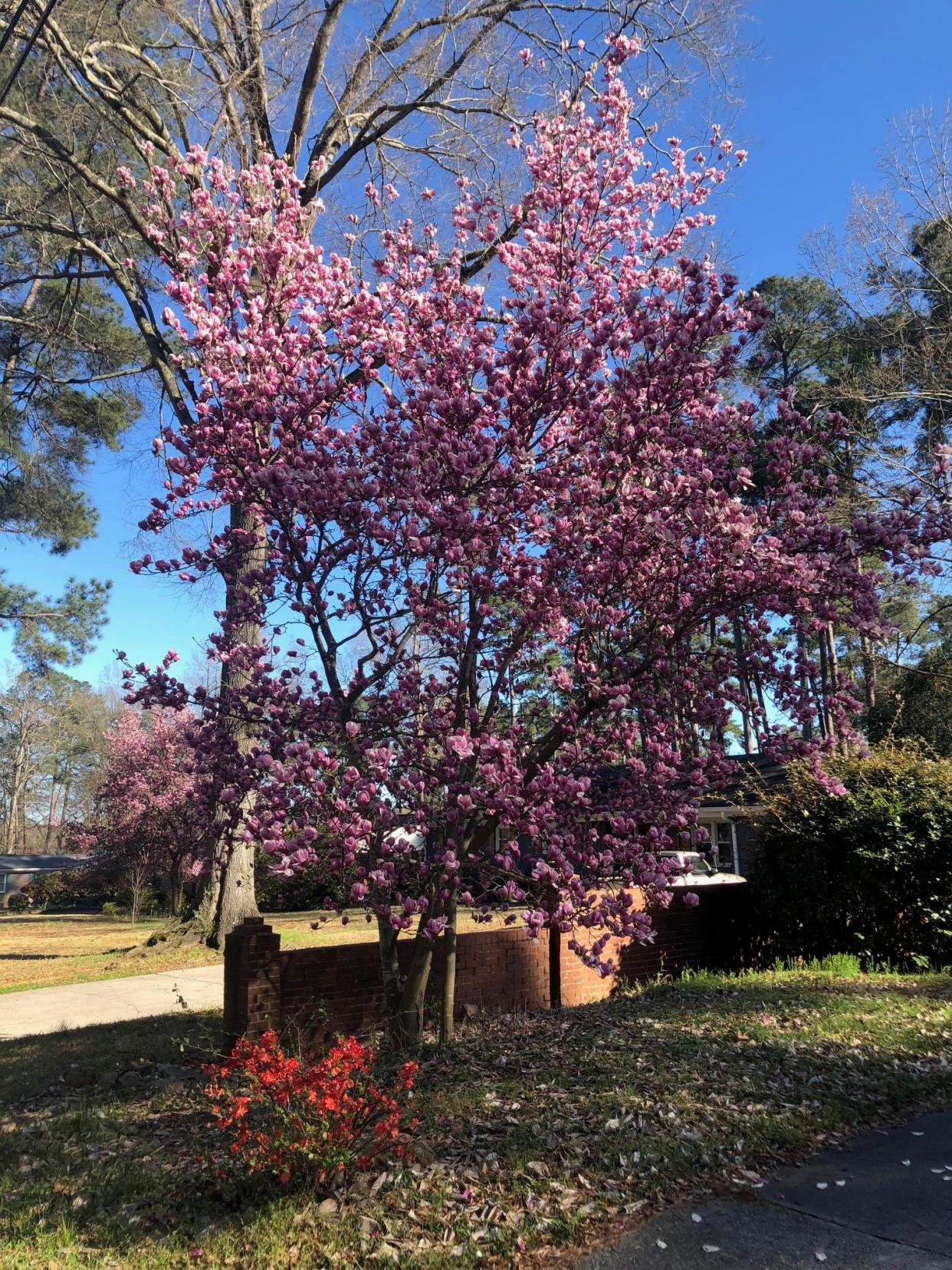Campbell Vaughn: Saucer magnolias are starting to bloom and they are showstoppers

Spring is looking like it is ready to roll.
Daffodils, red maples (Acer rubrum) and forsythia are in full swing. I am seeing a bunch of ornamental fruit trees like plum, apricot and some of the early blooming cherries really showing out. I know my purple leaf plum will be in full bloom by Sunday.
Every year it is the saucer magnolias (Magnolia x soulangiana) that are always the showstoppers around town.
Each spring I get calls asking what the beautiful pink and white blooming trees with the giant flowers are. They are called saucer magnolias, or Japanese magnolias, and it is a hybrid of Yulan magnolia (Magnolia denudata) and Lily Magnolia (Magnolia liliiflora).
Some history in the plant is that they were bred by a French soldier, Etienne Soulange-Bodin, and first bloomed in 1826.

This year has been extra special because a lot of the cultivars are blooming at the same time, which is unusual. Normally I see a couple starting up in late January and on into late March, but the sustained cold seemed to have kept these deciduous bloomers dormant until this past week.
Not that it happened this year, but I usually get nervous when I see them begin flowering in late January because a hard frost will usually blacken the flowers on early blooming cultivars. I think the plant is so striking because it flowers when most deciduous trees still don’t have leaves on them and all of the sudden you can see this explosion of color deep into the landscape.
This small- to medium-sized tree is an excellent selection as a specimen, large container plant and even espalier. I tend to not like to use it too much as a featured plant in a landscape because it is a little bland during the non-blooming 50 weeks of the year, but in the right place it will make a great once-a-year showpiece.
Although it prefers full sun, it tolerates partial shade. I like to avoid planting this tree in southern exposures because the warm sun can cause an earlier bloom and frost might get it. Ideal soil conditions are rich, porous, slightly acidic (pH 5.5 to 6.5) and well-drained. Most of these will tolerate moderate drought and some occasional wet soils.
Campbell Vaughn: Now is the time to use preemergence herbicide unless you want a weedy summer
These trees are relatively maintenance free. It is best to prune branches that droop over patios and walkways. Aggressive pruning of the branches after flowering tends to increase canopy density and flowering.
These magnolias are mostly pest free, but can battle certain types of scale insects, mites and some leaf spot fungus or powdery mildew.
One of my favorite tree people to follow is UGA’s Dr. Michael Dirr. He literally wrote the book on trees and shrubs and he said his personal favorite sauce magnolia cultivar is ‘Alexandrina’ (deep rose purple outside with pure white inside), but there are plenty of others to fit most landscapes. A little smaller but upright one is ‘Lilliputian’. ‘Verbannica’ is another one that blooms later with a broad, pyramidal form reaching 20-25 feet in height.
This magnolia is probably one of the most beautiful blooming trees in the world and now is the time to really enjoy the show.
This article originally appeared on Augusta Chronicle: Saucer magnolias starting to bloom in Georgia and they're beautiful
